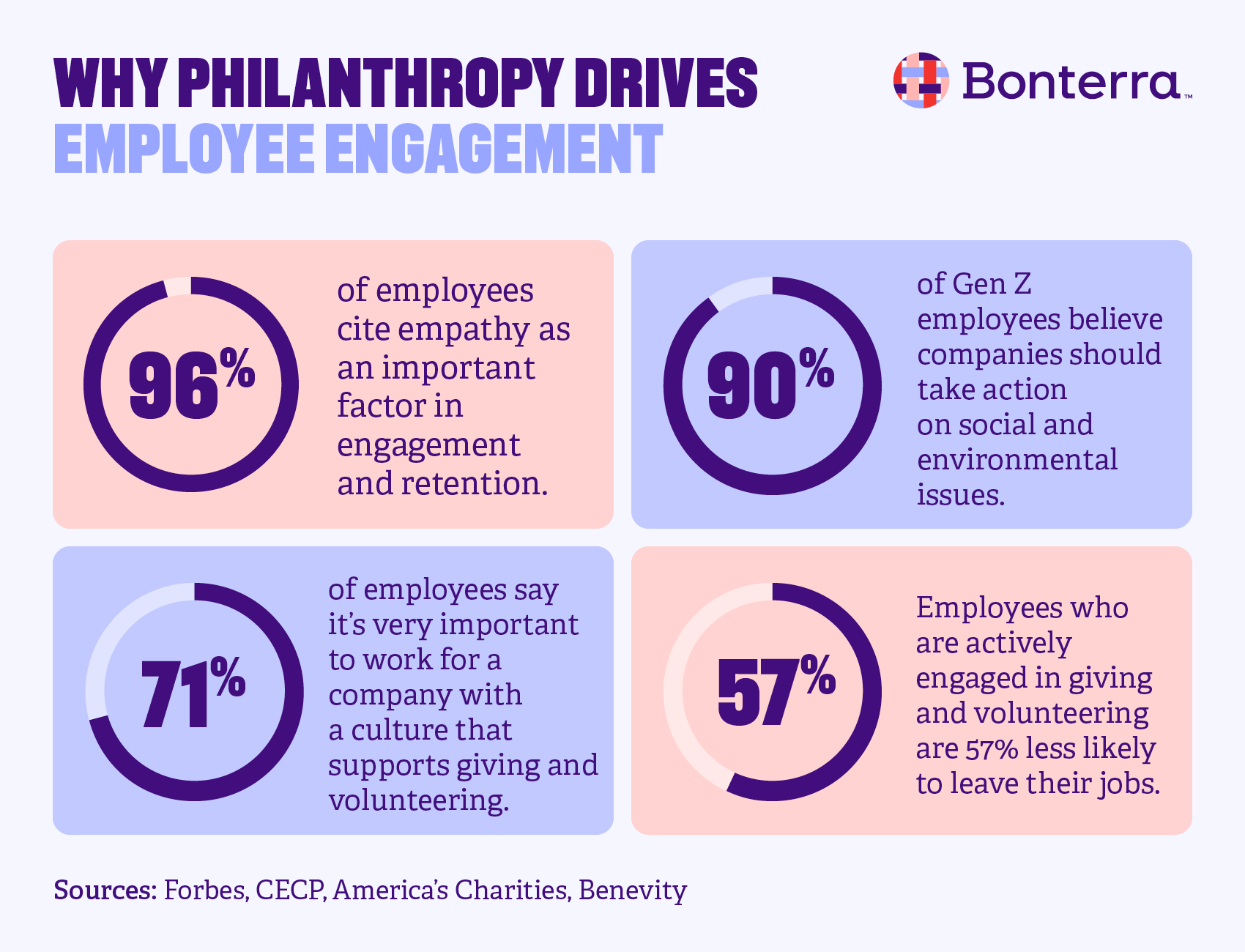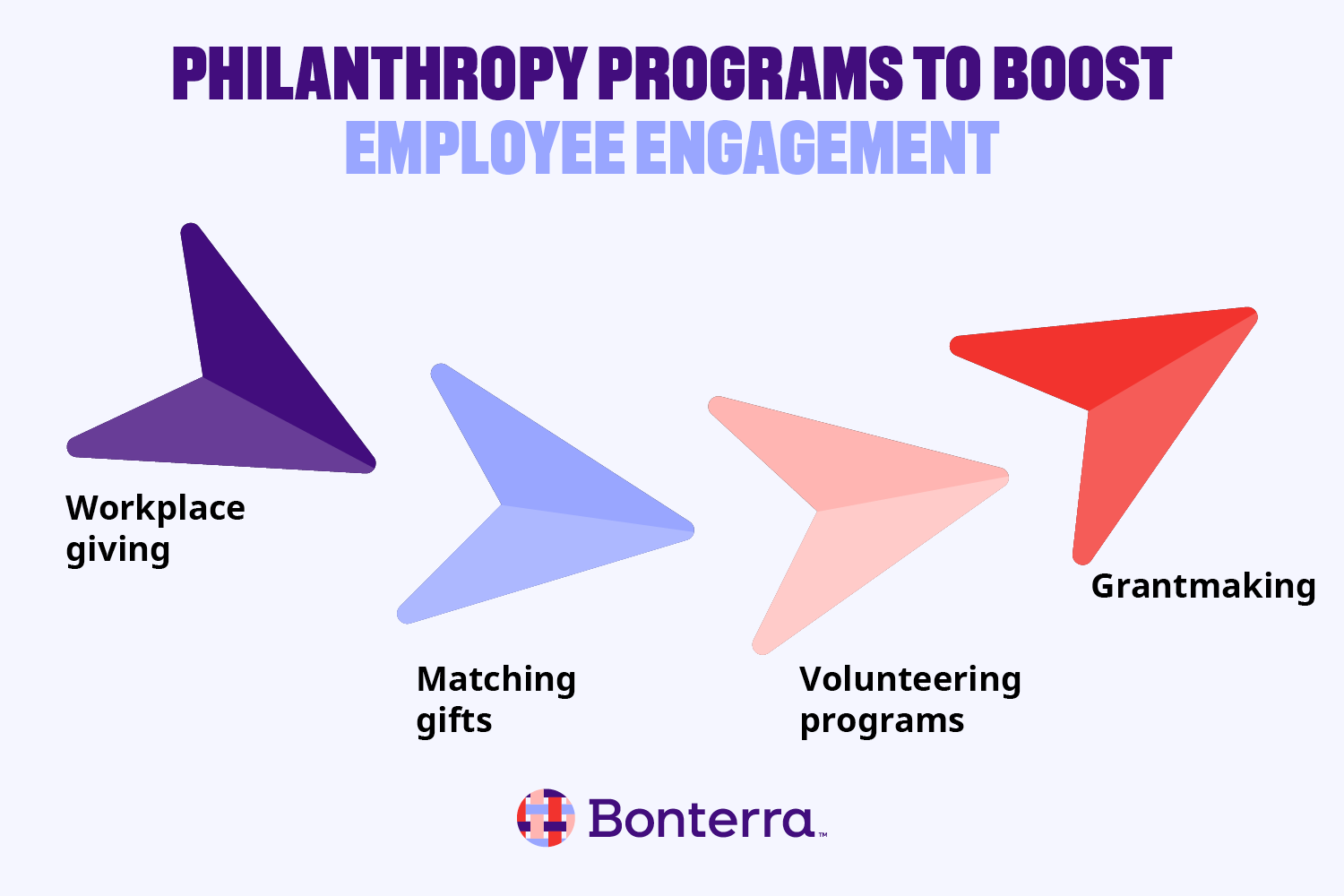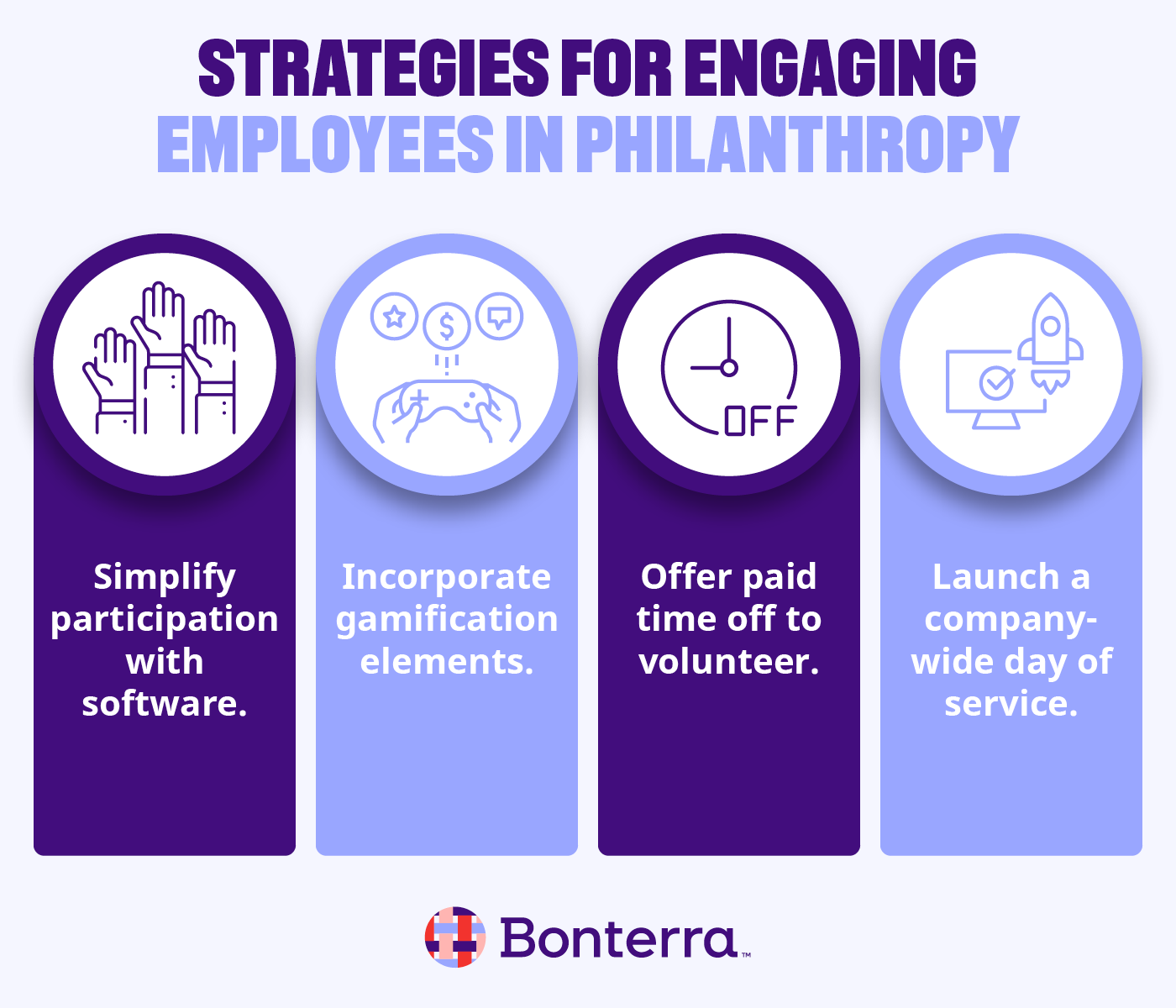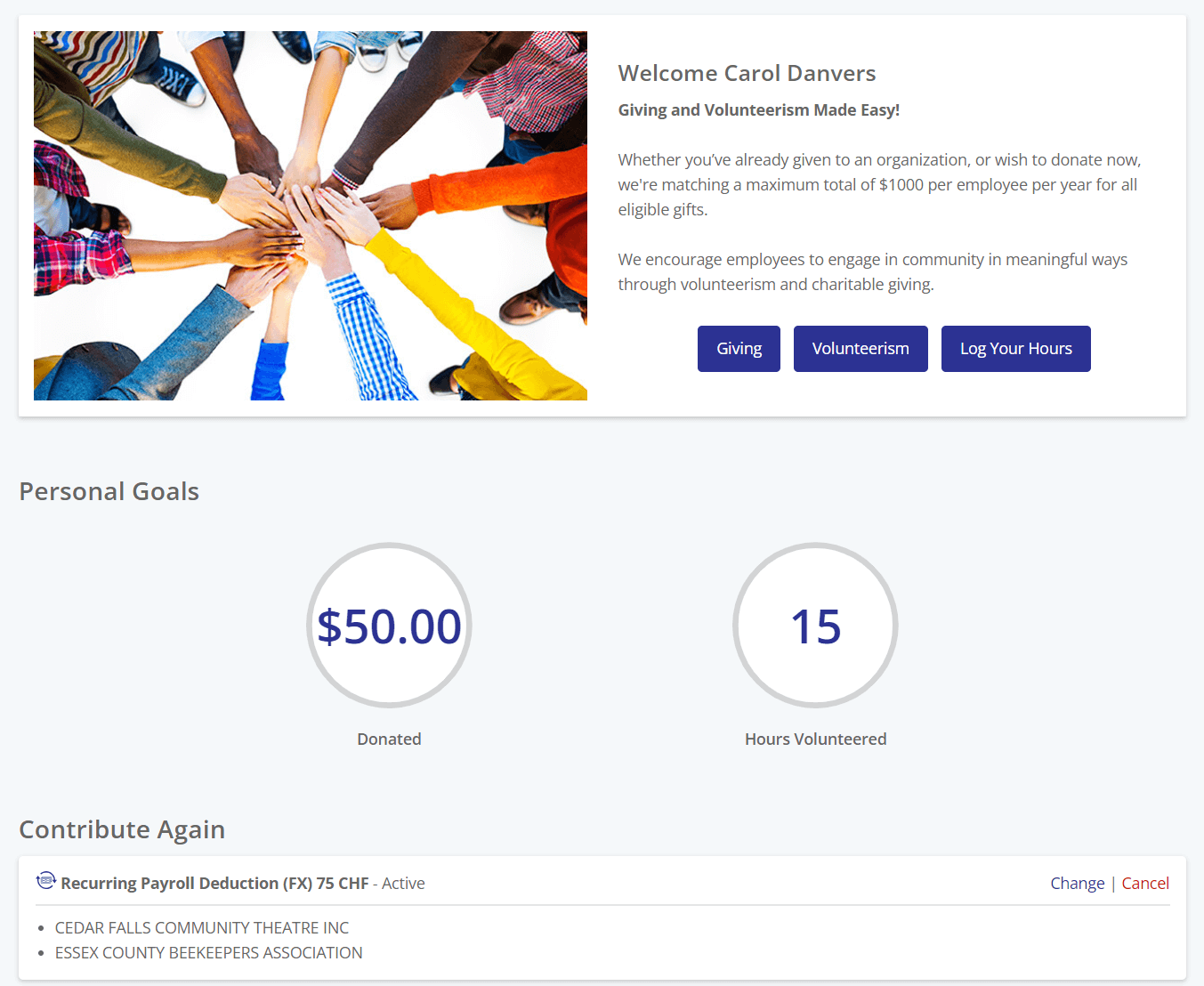Employee engagement basics: giving teams a sense of purpose

As a corporate leader, you may have heard that overall employee engagement has been dropping steadily for the past few years. While this is true, there’s also plenty that your corporation can do to re-engage team members and keep them invested in the company’s long-term success.
This guide covers the basics of employee engagement and key steps your business can take to prioritize and boost engagement levels. By focusing on giving team members a greater sense of purpose, you’ll strengthen their relationship with your company and empower them to put in their best work.
What is employee engagement?
Employee engagement refers to how actively involved, enthusiastic, and dedicated a company’s employees are at work.
When engagement is high, employees feel a sense of pride in their roles and are motivated to go above and beyond. They feel connected to their jobs and are excited to contribute to the company’s success. Low engagement levels, on the other hand, may contribute to lower productivity and retention rates.
Why is employee engagement important?
According to the Harvard Business Review, “Employee engagement has a direct impact on business outcomes such as revenue growth, profitability, productivity, and customer satisfaction.”
Even better, successfully increasing employee engagement leads to 59% less turnover and 41% less absenteeism. This means that cultivating an engaged workforce will help you retain top talent and spend less time and money on hiring. Plus, you’ll inspire more employees to remain productive and bring their best ideas to the table to further your company’s business goals.
What drives employee engagement?
Many things can drive employee engagement, from developing a positive company culture to simply making employees feel heard and supported. However, one of the top drivers of employee engagement is purpose. When employees feel a sense of purpose at work and believe that their employer shares their values, they’re more likely to remain actively engaged at work long term.
One of the most well-established, impactful methods for instilling a sense of purpose in employees is corporate philanthropy. Just take a look at these statistics that illustrate the power of philanthropy in driving employee engagement:

- In a Forbes study, 96% of employees cited empathy as an important factor in their engagement and retention.
- On average, 90% of Gen Z employees believe companies should take action on social and environmental issues, and 75% will perform their own research to see if a company is being honest about their support.
- 71 percent of surveyed employees say it is imperative or very important to work for a company with a culture that supports giving and volunteering.
- Employees who are actively engaged in giving and volunteering are 57% less likely to leave their jobs.
When you show employees that your company is committed to furthering the causes they care about — and empowering team members to play a part — you give them a greater sense of purpose, boosting their confidence in your company and overall engagement.
How to improve employee engagement
Now that you understand what employee engagement is and some of the factors that contribute to it, let’s zero in on a few actions you can take to improve engagement at your business.
Engage employees through corporate responsibility programs
As we mentioned earlier, it’s clear that employees want to see more corporate responsibility programs from their employers and that they want to be involved. These programs give team members the chance to give back to their communities with your company’s help, proving to them that your business is committed to furthering its values.
In particular, adopting these four types of philanthropy initiatives can make team members feel more engaged at work:

- Workplace giving: Having a well-thought-out employee giving program indicates to your employees that you care about the community and their interests. Allow employees to donate to causes they’re passionate about through corporate giving drives, payroll deductions, or charitable spending accounts.
- Matching gifts: One of the easiest ways to get started with workplace giving is by starting a matching gifts program in which you match eligible donations made by employees. Your team members will appreciate the additional impact they can make on their favorite nonprofit organizations with your help and be more inspired to give.
- Volunteering programs: Offering their time to charitable causes through volunteer paid time off (PTO) or team volunteer outings gives employees a sense of meaning and fulfillment. Plus, they may even learn new skills that can add value to your company. Of employees who volunteered, 76% say volunteering helped them develop core work skills.
- Grantmaking: Give directly to a variety of nonprofits that align with your employees’ values through a grantmaking program. Through grants, you can show employees the tangible impact of your company’s philanthropy and form mutually beneficial partnerships with nonprofits.
Providing choices to your team regarding their philanthropic efforts is key to maximizing their interest since not every employee will want to engage in the same way. Offer giving options for multiple causes and organizations, and encourage employees to participate in different programs such as volunteer grants and matching gifts.
Prioritize transparency and communication
Trust is essential for fostering employee engagement strategies. To earn employees’ trust and prove that your company deserves their dedication, remain transparent about your business goals, successes, and challenges. Communicate with team members honestly, and open the door for them to communicate honestly with managers and leadership, too.
For example, let’s say your company just started a new matching gift program. To increase transparency, you should regularly update employees on the results of the program, such as how much you’ve donated in matching gifts this year and to which organizations. In your communications, you might also encourage team members to send their feedback about the program and any ideas for improvement.
Recognize employees often
For employees to continue putting in their best work, they need to know that your company values their efforts. Implement consistent recognition strategies to show employees that you care. These strategies might look like:
- Sharing individual team members’ successes at company-wide meetings
- Sending quick “Kudos” messages to employees when they go above and beyond
- Asking managers to share positive feedback with directs every week
- Celebrating employee achievements with small gifts or awards
Recognize employees for both their day-to-day work and the other ways they engage with your company. For instance, you might send thank-you emails to every employee who participates in a team volunteer outing to encourage them to continue getting involved.
Request and act on employee feedback
Allowing your team to develop and provide input about your business is a great way to generate engagement. You might request feedback through regular surveys or an employee resource group. Not only will you have a better idea of what matters to your staff, but you’re also far more likely to boost engagement if they know that you’re paying attention to their ideas and needs.
Invest in your employees’ growth
Show employees that you’re as committed to them as they are to your business by investing in their professional development. Provide additional training, opportunities to attend conferences, and other ways for them to develop their skills with your company’s support.
You can also combine this strategy with your philanthropy efforts by offering skill-based volunteering opportunities or leadership roles within giving and volunteering programs.
Strategies for engaging employees through philanthropy
Excited to start boosting employee engagement with new corporate responsibility initiatives? Use these tips to encourage participation and engage as many employees as possible:

Simplify participation with the right software
To encourage employees to participate in your programs and streamline program management, consider investing in a corporate social responsibility software. These solutions make it easy to:
- Customize and manage your programs: You can customize your programs to align with your corporation’s values and philanthropic goals, choosing nonprofit organizations and causes that your employees would be interested in donating to.
- Track donations: Track grants, matching donations, and other gifts made through your programs. This makes it easier to understand and demonstrate your programs’ impact. Plus, tracking all your company’s giving in one place helps you declare tax-deductible donations during the next tax season.
- Coordinate volunteer activities: When employees can organize team volunteer efforts and log their hours in one convenient platform, they’ll be more likely to stay engaged in your volunteer programs.
Some solutions even provide personalized goals, dashboards, and opportunities for employees within the platform. These features help employees quickly see their impact and find new ways to get involved in philanthropy. In the example below, an employee dashboard shows a team member how close she is to her giving and volunteering goals, along with her donation history.

Another way to remove participation barriers and inspire more employees to join your programs is to provide all the information they need in a format that’s easy to access. For example, you might outline clear instructions and program guidelines in your employee handbook along with your company portal.
Incorporate gamification elements
Make giving and volunteering more fun with gamification. Use leaderboards, fundraising thermometers, and employee challenges to motivate employees to give back through your programs.
During a giving or volunteering challenge, maintain momentum with a visual representation of your team’s progress. Set multiple, small goals and track them together, either physically on the break room wall or virtually through an app or your company portal. Seeing what you’ve accomplished together is a surefire way to inspire teamwork and pride in the office.
As you try out gamification techniques, remember that leadership buy-in is crucial to philanthropic success and improving employee morale. When leaders join their teams in their efforts, contributions, and celebrations, you’ll see a more engaged employee community.
Offer paid time off to volunteer
Volunteering programs are exciting for employees, but they can be difficult to join if these opportunities only occur outside of work hours. To make volunteering more accessible, consider offering volunteer time off, or VTO.
VTO is a form of paid time off that allows employees to give their time to causes that matter most to them during the work week. While many employers already offer paid time off to their employees, volunteer time off is becoming increasingly popular as an additional benefit.
How can you implement a VTO policy? Create an open policy that allows employees to contribute to the organizations and causes that are most important to them. Or, specify which organizations they can volunteer with, focusing on those that your company prefers to support. Once you’ve mapped out your policy, communicate this information to your employees and watch them jump at the opportunity.
Launch a company-wide day of service
Alternatively (or in addition to offering VTO), consider launching a company-wide day of service where employees can volunteer together and enjoy the benefits without needing to use any of their time off.
Opportunities like this increase employees’ appreciation for their employer and inspire them to get more involved with other philanthropy initiatives. Aside from being highly successful in driving participation and employee engagement, days of service can also serve as team-building opportunities. Plus, they offer company leaders the opportunity to have their staff help organize tasks, lead teams, and develop leadership skills outside their usual roles.
Amplifying employee engagement and social impact
There are no right or wrong ways to boost employee engagement with philanthropy programs at your company. Your employees want to give back — they just need the opportunity. By helping them make a difference in their community, you’ll positively impact the workforce, increase employee happiness, and help your business thrive.
Strategic philanthropy is the best way to engage your employees.
Work with Bonterra



